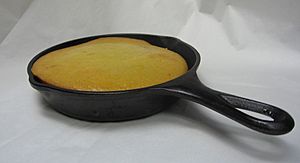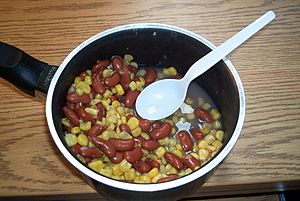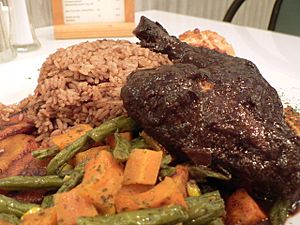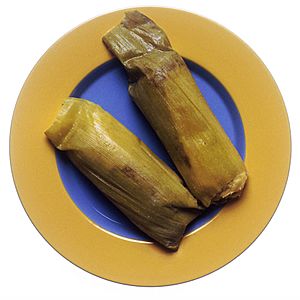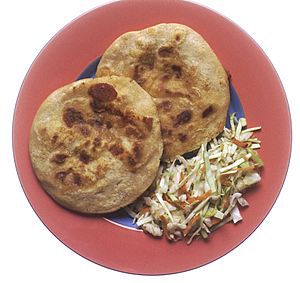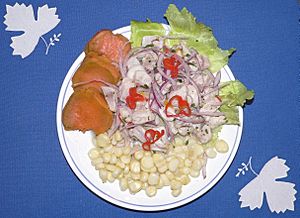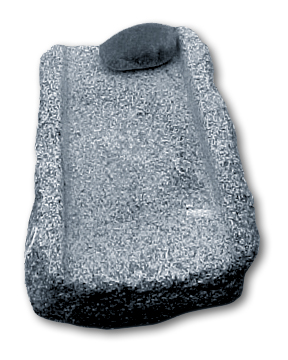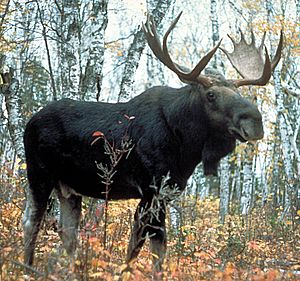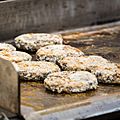Indigenous cuisine of the Americas facts for kids

Native American cuisine is all about the amazing foods and cooking styles of the indigenous peoples of the Americas. Today, Native communities still enjoy many traditional foods. They also use some foods that became popular after Europeans arrived, like frybread, which is now a favorite at many gatherings. Foods like cornbread, turkey, cranberry, blueberry, and hominy were first used by Native Americans and are now common in the United States.
Long ago, people wrote down how Native Americans cooked. These old writings help us learn about and bring back traditional food practices that might have been forgotten.
The most important crops grown by Native Americans usually included corn, beans, squash, sunflowers, wild rice, sweet potatoes, tomatoes, peppers, peanuts, avocados, papayas, potatoes, and cacao.
Native American food is special because it uses ingredients that were grown or found in the wild. The Americas have many different natural areas, and there are over 500 recognized Native American tribes in the U.S. alone. This means Native American food can be very different from one region to another. For example, food from North America is often simpler in flavor than food from the Southwest or Mexico. Ingredients like ramps (wild onions), wild ginger, and juniper berry add unique tastes to dishes.
Contents
Traditional Food Ways
In many traditional Native American societies, women often gathered shellfish, wild plants, berries, and seeds. For the Plains Indians, who lived between the Mississippi River and the Rocky Mountains, American bison (buffalo) was a very important food source.
Recipes were first shared by talking and showing, not by writing them down. Over hundreds of years, some tribes moved to different climate zones. This meant their cooking styles changed to use local ingredients. Some experts believe that the Pueblo, Hopi, and Zuni people in the Southwest might have kept more of the original cooking traditions.
Native American Food in North America
Country Food in Canada
In Canada, "country food" means the traditional foods eaten by Indigenous peoples in Canada (like First Nations, Metis, and Inuit). This is especially true in far-off northern areas where Western foods are expensive. Traditional foods are still a main part of their diet.
In 2015, the government of the Northwest Territories said that almost half of the people in smaller communities got 75% of their meat and fish from country food. In bigger cities like Yellowknife, this number was much lower.
Common country foods in the Northwest Territories include animals like caribou, moose, ducks, geese, and seals. Fish like lake trout and whitefish are also popular. Berries such as blueberries, cranberries, and cloudberries are gathered.
In the eastern Canadian Arctic, Inuit people eat foods they fish, hunt, and gather. This can include caribou, walrus, seals, beluga whale, polar bear, and various berries.
Some parts of animals are more valued than others. For example, in the James Bay area, beluga whale meat was often used for dog food, but the blubber, called muktuk, was a special treat. Younger ring seals are preferred by the Inuit, with older ones often used for dog food.
There are concerns about pollution in country foods in Northern Canada. Scientists test volunteers to see how industrial chemicals travel from the south into the northern food chain.
In 2017, the Northwest Territories government decided to use country foods in a new hospital. This shows how important these foods are, even with the challenges of getting and preparing wild game and plants.
In Southern Canada, wild meats are rarely found in restaurants. This is because of rules against selling hunted meat and strict food safety checks. There is a difference between people in rural areas who eat wild foods and city people who usually do not.
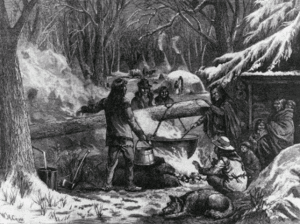
Eastern Native American Food
The main foods for the Indigenous peoples of the Eastern Woodlands were traditionally corn (also called maize), beans, and squash. These three are known as "The Three Sisters" because they were planted together. The beans grew up the tall corn stalks, and the squash spread out below, protecting the roots.
Maple syrup is another key food for Eastern Woodlands peoples. Tree sap is collected from sugar maple trees in early spring when nights are still cold. People used birch bark containers to make maple syrup, maple cakes, maple sugar, and maple taffy. Boiling the sap to different temperatures creates these various maple treats. When the sap gets thick, it can be poured onto snow to make taffy.
Early settlers in New England learned from Native Americans how to use local crops. So, Native American influences are a big part of New England cuisine. Dishes like cornbread, succotash, and Johnnycakes are still enjoyed today. Ingredients like corn, cranberries, and local clams are also very popular.
The Wabanaki tribes and other Eastern Woodlands peoples also made nut milk and baby formula from nuts and cornmeal.
Southern Native American Food
Southeastern Native American culture greatly shaped Southern cuisine. One main food from this culture is corn (maize). It was ground into meal or treated with a special salt to make hominy, using a Native American method called nixtamalization. Corn is used for many dishes, from cornbread and grits to traditional drinks.
Potatoes were also adopted from Native American cooking and used in many ways, similar to corn. Native Americans taught early settlers about many vegetables still common in Southern cooking. Squash, pumpkin, many types of beans, tomatoes, different peppers, and sassafras all came from Indigenous peoples. The word pawcohiccora from the Virginia Algonquian language means hickory nut meat or a nut milk drink made from it.
Many fruits grow in this region. Muscadines, blackberries, raspberries, and other wild berries were part of Southern Native Americans' diet.
Southeastern Native Americans also ate meat from hunting local animals. Venison (deer meat) was always important because there were many white-tailed deer. Rabbits, squirrels, opossums, and raccoons were also commonly eaten.
After Europeans arrived, animals like hogs and cattle were also raised. Besides the usual parts of the animal, it was traditional to eat organ meats like liver, brains, and intestines. This tradition continues today in dishes like chitterlings (fried hog intestines), livermush (made from hog liver), and pork brains with eggs. The fat from animals, especially hogs, was melted down and used for cooking. Many early settlers learned Southern Native American cooking methods.
Popular Southern Dishes
- Chitterling (or Chitlin), often made from hog intestines.
- Cornbread, a baked bread made from cornmeal.
- Hominy, coarsely ground corn used to make grits.
- Hush puppy, a small, deep-fried ball made from cornmeal batter.
- Indian fritter.
- Livermush, a dish from the Carolinas made from pig liver, pig head parts, cornmeal, and spices.
- Sofkee, a corn soup or drink.
Great Plains Native American Food
Indigenous peoples of the Great Plains and Canadian Prairies, known as Plains Indians, relied heavily on American bison (buffalo) for food. One traditional way to prepare meat was to cut it into thin slices and dry it over a slow fire or in the hot sun. This made it hard and brittle, allowing it to last for months. It could be eaten alone or mixed with other foods.
One such mixture was pemmican, a concentrated mix of fat, protein, and sometimes fruits like cranberries, Saskatoon berries, blueberries, and cherries. Many parts of the bison were used and prepared in different ways, including boiled meat, tripe soup, roasted intestines, and smoked meat. Raw kidneys, liver, and tongue were sometimes eaten right after a kill.
The animals eaten by Great Plains Indians, like bison, deer, and antelope, were grazing animals. Their meat was rich in omega-3 fatty acids, which are important for health.
Plains elders said their traditional main foods included prairie turnips, fruits (like chokecherries, June berries, and plums), potatoes, squash, dried meats (like venison and buffalo), and wild rice. Pemmican was also a key food.
Western Native American Food
In the Pacific Northwest, traditional diets include salmon and other fish, seafood, mushrooms, berries, and meats like deer, duck, and rabbit.
Unlike Easterners, people in the Northwest were mainly hunter-gatherers. The mild climate meant they had plenty of food all year, so they didn't need to rely as much on farming.
In what is now California, acorns were ground into flour. This flour was sometimes the main food for about 75% of the population. Dried meats were also prepared during the dry season.
Southwestern Native American Food
The Ancestral Puebloans lived in the Four Corners region (Arizona, Colorado, New Mexico, and Utah). They farmed by growing maize, beans, squash, sunflower seeds, and pine nuts from the pinyon pine. They also hunted game like venison and rabbits, and fished for Rio Grande cutthroat trout and rainbow trout. These were all traditional foods in the region.
Ancestral Puebloans were skilled at making baskets and pottery. This shows they had extra food that needed to be carried and stored. They also used clay pots for cooking. Grinding stones were used to turn maize into meal for cooking. Old dig sites show that turkeys were raised for food very early on.
New Mexican cuisine has strong roots in both Pueblo and Hispano food traditions. It is a very popular cooking style in the American Southwest, especially in New Mexico.
In 2002, the cookbook Foods of the Southwest Indian Nations won a James Beard Award. It was the first Native American cookbook to receive this honor. Before this, publishers had told the author, Lois Ellen Frank, that there was no such thing as Native American cuisine.
Alaskan Native Food
Alaskan Native food includes nutrient-rich foods like seal, fish (especially salmon), and moose. Berries (like huckleberries) and bird eggs are also traditionally eaten by Alaska Natives.
Seal, walruses, and polar bear are the large animals hunted by Alaska Natives. Smaller game includes whitefish, Arctic char, Arctic hare, and ptarmigan.
Because of the cold weather, edible plants like berries are only available in summer. So, people often eat a diet very high in fat and protein, but low in carbohydrates.
The animals that are hunted are also used for clothing. The intestines of large mammals are used to make waterproof clothes, and caribou fur is used for warm clothing.
Popular Dishes
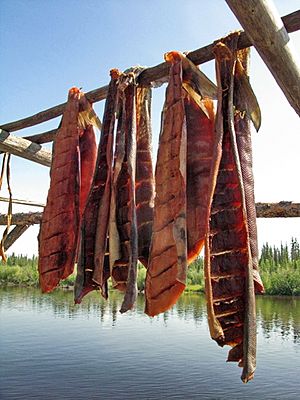
- Acorn bread
- Acorn mush, from the Miwok people.
- Akutaq, also called "Eskimo ice cream." It's made from caribou or moose fat and meat, berries, and seal oil, whipped with snow or water.
- Bannock, a type of bread, often cooked over an open fire.
- Bean bread, made with cornmeal and beans, popular among the Cherokee.
- Black drink or asi, a special drink from the Southeast made from the yaupon holly.
- Buffalo stew, from the Lakota and Cherokee people.
- Cornbread and corn pone. The word pone comes from Native American words for 'bread'.
- Dried meats like jerky and smoked salmon strips.
- Filé powder, made from sassafras leaves, used by the Choctaw to flavor and thicken soups.
- Frybread, a dish made from ingredients given to Native Americans living on reservations.
- Green chili stew.
- Hopi tea, an herbal tea.
- Mutton stew, from the Navajo people.
- Nokake, Algonquian hoecakes, made of cornmeal.
- Nut milk, from the Wabanaki.
- Pemmican, a concentrated food with dried meat, dried berries, and fat.
- Piki bread, from the Hopi people.
- Psindamoakan, a Lenape hunter's food made of roasted cornmeal mixed with maple sugar.
- Pueblo bread.
- Salted salmon, an Inuit dish of salmon soaked in salty water for months.
- Sapan, cornmeal mush, a main food in Lenape cooking.
- Stink fish, an Inuit dish of dried fish kept underground until it's "ripe."
- Succotash, a dish of beans and corn.
- Sumac lemonade, a drink made from sumac berries.
- Tiswin, a term for several traditional drinks in the Southwest, often made from corn or fruit.
- Walrus flipper soup, an Inuit dish.
- Wojapi, a Plains Indian pudding made from mashed, cooked berries.
Native American Food in the Caribbean
This region includes the cultures of the Arawaks, Caribs, and Ciboney. The Taíno people of the Greater Antilles were the first in the New World to meet Columbus. Before Europeans arrived, these groups found, hunted, and fished for their food. The Taíno grew cassava, sweet potato, maize, beans, squash, pineapple, peanut, and peppers. Today, these cultures have mostly blended with others, but their cooking traditions live on.
- Ajiaco, a soup thought to be from Cuba before Columbus. It mixes different meats, root vegetables, and peppers.
- Barbacoa, the origin of the English word barbecue. It's a way of slow-grilling meat over a fire pit.
- Jerk, a cooking style from the Taíno of Jamaica. Meat is rubbed with spices like allspice and Scotch bonnet pepper, then smoked over fire.
- Casabe, a thin, crispy flatbread made from cassava root. It was common in the Caribbean and Amazonia long ago.
- Bammy, a Jamaican bread made from cassava and water. Today, it's often fried with coconut milk.
- Guanime, a Puerto Rican food like a tamale. It's made with cornmeal or cornmeal and mashed cassava.
- Pasteles, a dish from Puerto Rico. It was once made with mashed cassava and taro wrapped in a taro leaf, then stuffed with meat.
- Funche or fungi, a cornmeal mush.
- Cassareep, a sauce or thickener made by boiling down juice from bitter cassava root.
- Mama Juana, a tea made in Hispaniola (Dominican Republic and Haiti).
- Pepperpot, a spicy stew of Taíno origin. It uses meat, vegetables, chili peppers, and boiled cassava juice.
- Bush teas, popular herbal remedies in the Virgin Islands and Caribbean. They often come from local plants.
- Ouicou, a traditional cassava-based drink brewed by the Caribs.
- Taumali or taumalin, a Carib sauce made from lobster liver, chili pepper, and lime juice.
Native American Food in Mesoamerica
The cooking of the Native Americans in Mesoamerica (like the Aztec, Maya, and Olmec) greatly influenced modern Mexican cuisine, Salvadoran cuisine, Honduran cuisine, and Guatemalan cuisine.
Some Known Dishes
- Alegría, a candy made from puffed amaranth and honey.
- Balché, a Mayan traditional honey drink.
- Champurrado, a chocolate drink.
- Chili.
- Corn tortillas.
- Guacamole.
- Huarache.
- Mezcal.
- Mole.
- Pejelagarto, a fish seasoned with chili and lime.
- Pozole.
- Pulque, a traditional drink made from fermented maguey juice.
- Pupusas, thick cornmeal flatbread from the Pipil culture of El Salvador.
- Salsa.
- Tacos.
- Tamales.
- Tepache, a pineapple drink.
- Tlacoyos (gordita).
- Xocolātl.
Native American Food in South America
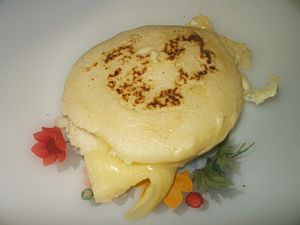
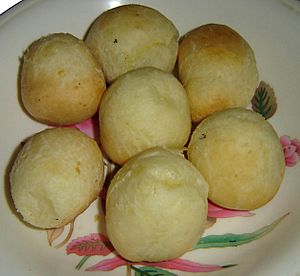
Andean Cultures
This includes recipes from the Quechua, Aymara, and Nazca peoples of the Andes mountains.
- Grilled guinea pig, a small animal raised for food in the Andes for thousands of years.
- Fried green tomatoes, a plant native to Peru.
- Chicha, a general name for many traditional drinks found in South America. Corn-based chichas are common in the Andes, while those in the Amazon Basin often use manioc. Other versions can be made from amaranth, quinoa, peanut, and other ingredients.
- Chicha morada, a sweet, unfermented drink from Peru made from purple corn, fruits, and spices.
- Colada morada, a thick, spiced fruit drink based on the Andean blackberry. It's traditional for Day of the Dead ceremonies in Ecuador, often served with guagua de pan (bread shaped like a baby).
- Quinoa porridge.
- Ch'arki, a type of dried meat.
- Humitas, similar to modern-day tamales. It's a thick mix of corn, herbs, and onion, cooked in a corn-leaf wrapper.
- Locro, a hearty thick stew popular in the Andes. It's a national dish in Argentina and Bolivia.
- Mazamorra morada, a thick, sweet pudding made from ground purple corn and fruit.
- Mate de coca, a Peruvian tea made from coca leaves. Indigenous people in the high Andes often drink it to prevent altitude sickness.
- Ceviche, raw fish marinated in lime juice. It's one of Peru's national dishes.
- Cancha or tostada, fried golden hominy.
- Llajwa, a salsa from Bolivia.
- Llapingachos, mashed-potato cakes from Ecuador.
Other South American Cultures
- Arepa, a corn-based bread from the indigenous peoples of Colombia and Venezuela.
- Vori vori, a Paraguayan soup with cornmeal dumplings.
- Chipa, many kinds of corn flour or manioc-based breads traditional to Paraguay.
- Curanto, a Chilean stew cooked in an earthen oven, originally from the Chono people.
- Kiveve, a sweet or savory dish from Paraguay made from pumpkin and other ingredients.
- Lampreado, a starchy, manioc-based fried cake from Paraguay and Argentina.
- Maniçoba, a dish of boiled manioc leaves and smoked meat from the Brazilian Amazon.
- Mate (beverage).
- Mbeju, a pan-cooked cake using manioc starch.
- Merkén, a chili powder from the Mapuche of Patagonia.
- Moqueca, a Brazilian seafood stew.
- Paçoca, from the Tupi word "to crumble." It describes two dishes: one with peanuts and sugar, and another with dried meat, ground manioc, and onion.
- Pamonha, a Brazilian tamale.
- Sopa paraguaya, a corn-flour casserole considered the national dish of Paraguay.
- Tacacá, a Brazilian stew of tucupi (manioc broth), jambu leaves, and shrimp.
- Tereré, a cold-brewed version of yerba mate.
- Tucupi, a manioc-based broth used in Brazilian dishes.
- Yerba mate, a tea made from the holly plant of the same name.
Cooking Tools
The first cooking tools, like bowls, knives, spoons, grinders, and griddles, were made from materials like rock and animal bone. Gourds were also grown, hollowed out, and dried to be used as bowls, spoons, and storage.
Many Native American cultures also created beautiful pottery for bowls and cooking pots, and baskets for containers. Important people in the Andean and Mesoamerican civilizations even had tools and vessels made from gold, silver, or copper.
- Batan, an Andean grinding slab used with a smaller stone.
- Burén, a clay griddle used by the Taíno people.
- Comal, a griddle used in Mexico and Central America for cooking tortillas and other foods.
- Cuia, a gourd used for drinking mate in South America.
- Metate, a stone grinding slab used with a stone mano to process meal in Mesoamerica.
- Molcajete, a stone bowl used with a tejolote to grind ingredients, like a mortar and pestle.
- Paila, an Andean earthenware bowl.
- Cooking baskets were woven from local fibers and sometimes covered with clay. What's special about basket cooking is that the heat source, like hot stones or charcoal, was placed inside the basket, not outside.
Crops and Ingredients
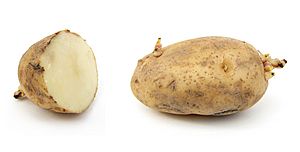
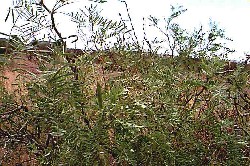
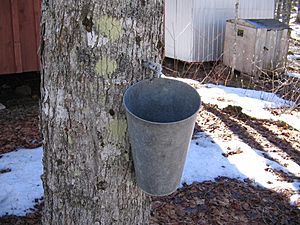
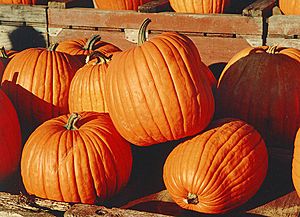
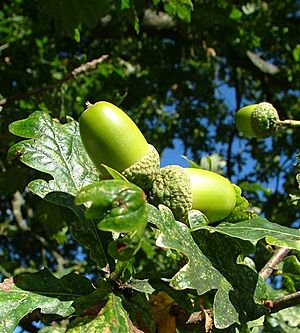
Plants and Fungi
- Acorns – used for flour.
- Agave nectar – a natural sweetener.
- Allspice – a seasoning.
- Amaranth.
- Avocado.
- Beans – found throughout the Americas.
- Birch syrup – a sweetener.
- Blueberries.
- Cactus – fruits and young pads.
- Cacao.
- Cassava – mainly in South America.
- Chia seeds.
- Chili peppers – used as seasoning.
- Cranberries.
- Currants.
- Elderberries.
- Guava.
- Hazelnuts.
- Hickory nuts.
- Huckleberries.
- Jerusalem artichoke.
- Juniper berries.
- Maize (corn) – found throughout the Americas.
- Maple syrup and sugar – main sweeteners in Northern America.
- Mesquite – bean pods and flour.
- Mulberries.
- Nopales – cactus pads.
- Onions.
- Papaya.
- Passionfruit.
- Peanuts.
- Pecans.
- Persimmon.
- Pine nuts.
- Pineapples – from South America.
- Potatoes – from North and South America.
- Pumpkins.
- Quinoa – from South and Central America.
- Ramps – wild onions.
- Raspberries.
- Sassafras.
- Squash – found throughout the Americas.
- Strawberries.
- Sumac – berries used for drinks.
- Sunflower seeds.
- Sweet potato – from South America.
- Tobacco.
- Tomatillo.
- Tomato.
- Vanilla – a seasoning.
- Wild rice.
- Yerba mate – a tea.
- Yucca – blossoms, fruit, and stalks.
Hunted Animals and Livestock
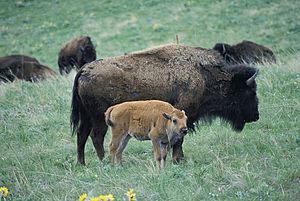
- Antelope.
- Bison – common in the North American plains.
- Cattle – brought by Europeans.
- Deer.
- Duck.
- Elk.
- Geese.
- Guinea pig – raised in the Andes.
- Hogs – important animals brought by Europeans.
- Horse – important to Native American cultures after being brought by Europeans.
- Llama – raised in the Andes.
- Moose.
- Rabbit.
- Raccoon.
- Sheep – important animals brought by Europeans.
- Squirrel.
- Turkey.
- Turtle.
Images for kids
-
Roast guinea pig (cuy)
See also
 In Spanish: Gastronomía de los indios nativos de Norteamérica para niños
In Spanish: Gastronomía de los indios nativos de Norteamérica para niños


